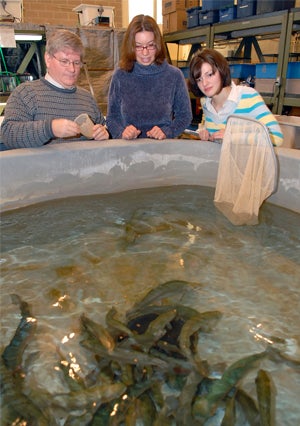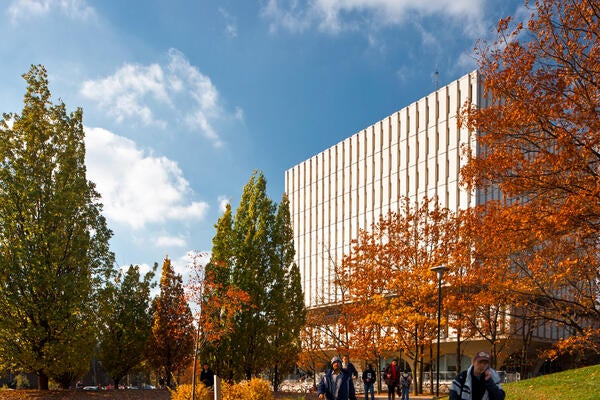
Flushed away: Protecting fish from the things we use every day
Substances in everything from the medicine we take to the shampoo we use can contaminate watersheds, says Waterloo researcher.

Substances in everything from the medicine we take to the shampoo we use can contaminate watersheds, says Waterloo researcher.
By Staff Communications and Public AffairsOur watersheds are being affected by more than the industrial chemicals that flow through wastewater treatment plants into our watersheds. Fish are being affected by everything from the medicine we take to the personal care products we use, says biology professor Mark Servos.
 Servos, an ecotoxicologist and holder of the Canada Research Chair in Water Quality Protection, says the things we use every day pass through treatment plants that were never designed to remove this diversity of substances. Many of these chemicals have only recently been recognized as a threat to aquatic ecosystems. One aspect of Servos’ research program tackles the challenge of understanding how chemicals that are flushed into our waterways behave and impact animals, especially fish.
Servos, an ecotoxicologist and holder of the Canada Research Chair in Water Quality Protection, says the things we use every day pass through treatment plants that were never designed to remove this diversity of substances. Many of these chemicals have only recently been recognized as a threat to aquatic ecosystems. One aspect of Servos’ research program tackles the challenge of understanding how chemicals that are flushed into our waterways behave and impact animals, especially fish.
Changes in fish near treatment plants
He says, recent findings in the Grand River have shown dramatic changes in fish near treatment plants, including altered expression of sex-related genes, the development of eggs in the male tissues (intersex), changes in the ability to produce hormones and altered reproductive success.
Servos researches the impact of contaminants on aquatic life at levels “from gene expression all the way up to whole communities of fish in watersheds around the world.” He says cooperation is the key to innovation in water science which is why the newly-created Water Institute, based at the University of Waterloo, will be integral to supporting sustainable watersheds globally.
Although Servos emphasizes that the levels of most of these emerging contaminants of concern detected in waterways such as the Grand River represent a minimal risk to humans, the long-term continuous exposure to these complex mixtures is a major global concern for aquatic ecosystems, especially fish.
Servos points out that “determining the specific chemicals in effluents responsible for these changes is a major scientific challenge.” By integrating chemistry and biology concepts he is creating tools for isolating the likeliest culprits, and testing approaches towards minimizing their impacts in the environment. “You can’t eliminate risk, but you can manage and minimize it,” Servos says.

Read more
15 University of Waterloo researchers have been named to the annual Highly Cited Researchers™ list for significant contributions to their specific fields of research

Read more
Twenty-six researchers receive federal funding to drive discovery, innovation and research infrastructure development

Read more
The Royal Society of Canada welcomes five new fellows and one RSC College member from the University of Waterloo
The University of Waterloo acknowledges that much of our work takes place on the traditional territory of the Neutral, Anishinaabeg, and Haudenosaunee peoples. Our main campus is situated on the Haldimand Tract, the land granted to the Six Nations that includes six miles on each side of the Grand River. Our active work toward reconciliation takes place across our campuses through research, learning, teaching, and community building, and is co-ordinated within the Office of Indigenous Relations.